What a feast looked like in the Russian Empire (PHOTOS)
1. What Russian doesn't like a feast? It’s a simply nice tradition to invite people or visit them with a treat. Here's what the festive dinners in different regions of the Russian Empire looked like over 100 years ago.
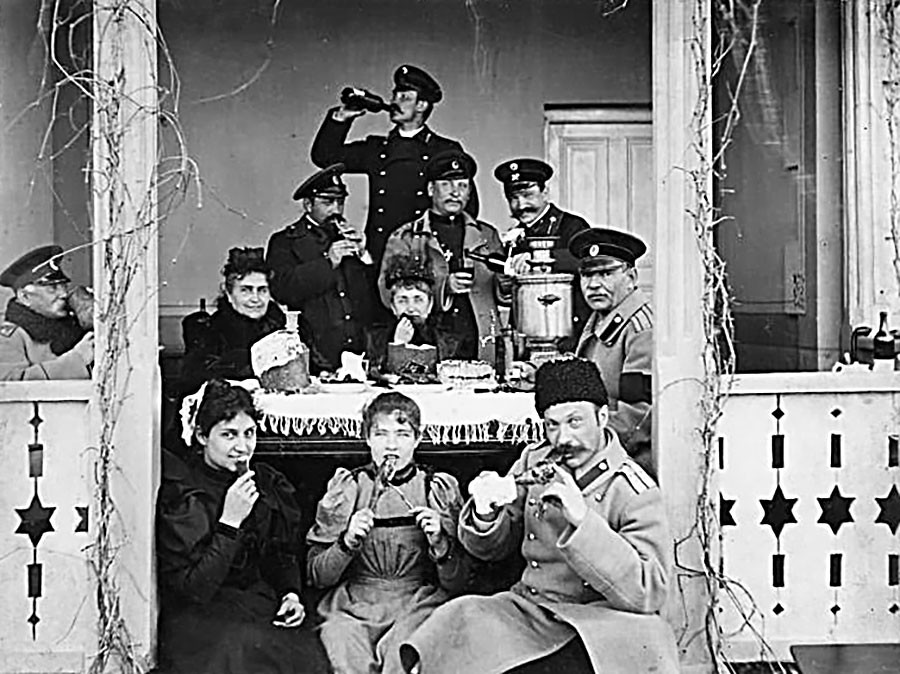
At the dacha’s festive table, 1910s.
MAMM/MDF/Russia in photo2. There were always lots of reasons for a big dinner, from family celebrations of birthdays or weddings, to religious holidays.
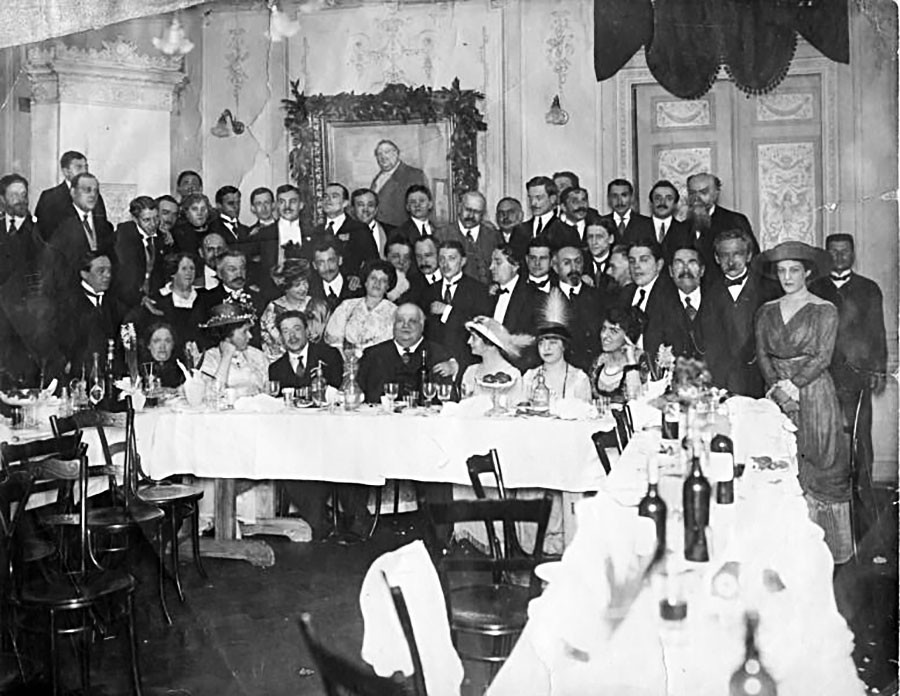
The jubilee of actor Konstantin Varlamov, St. Petersburg. Between 1910-1915.
Joseph Shnaider/MAMM/MDF/Russia in photo3. Hosts always cooked the best dishes - and often some unusual recipes, that they could not afford in everyday life.
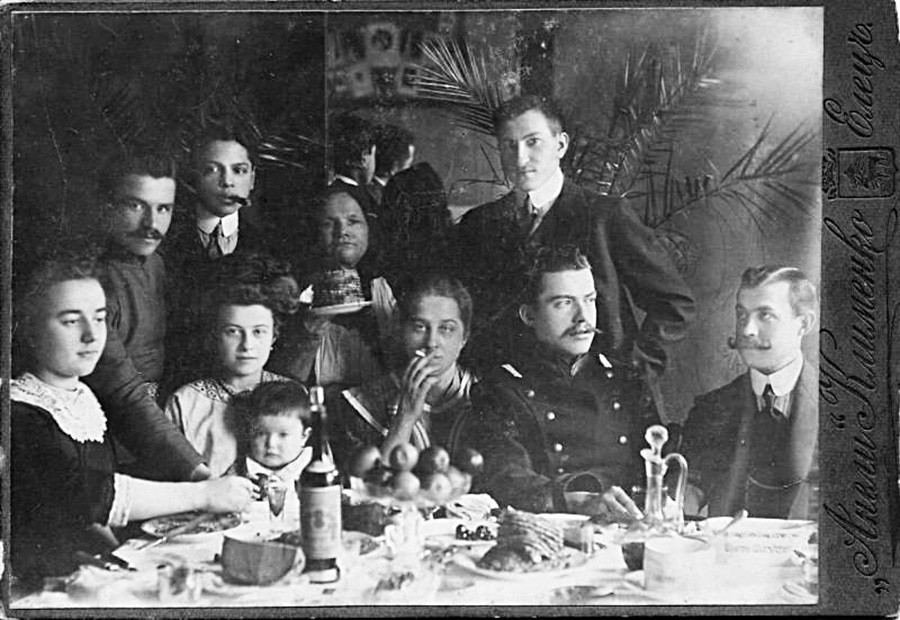
Celebration of Maslenitsa, Oryol Region, Yelets. 1903.
Ivan Klimenko/MAMM/MDF/Russia in photo4. In the Russian Empire, the main holiday of the year was Christmas, not New Year, as today (here’s why). They decorated a Christmas tree, bought gifts for children and, of course, prepared a festive dinner - even the poorer people did. And the Christmas table was always full of gastronomic delights: caviar, pies, fish, salads, wines, etc.
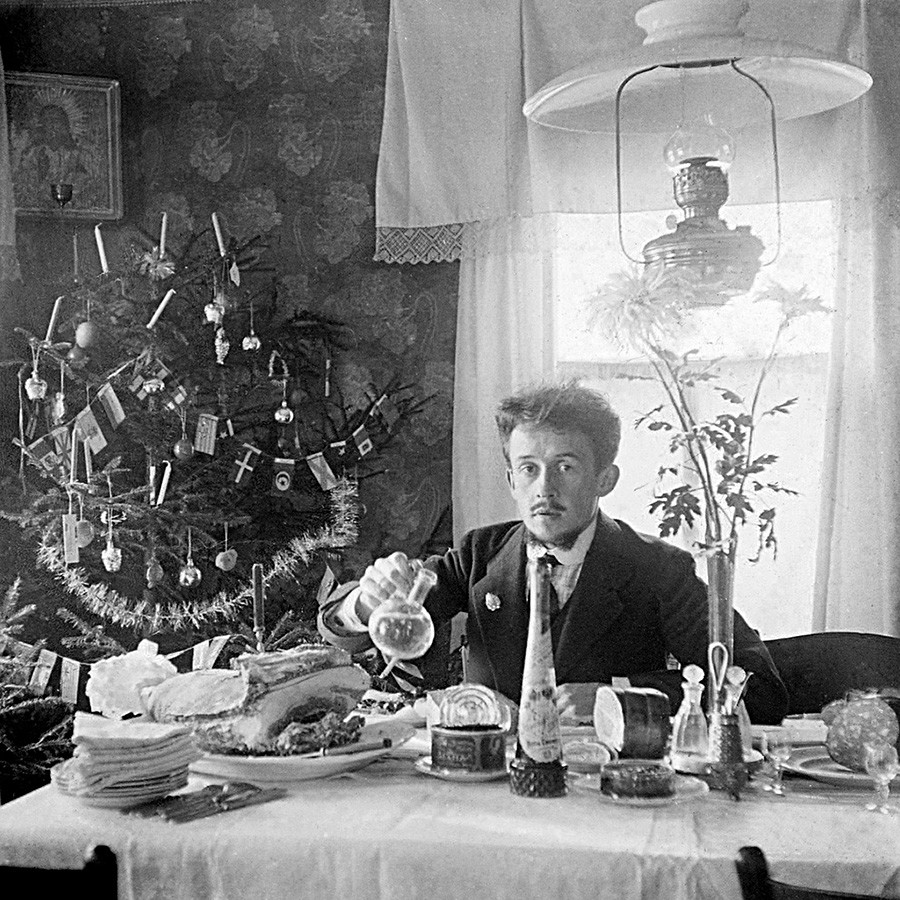
A self-portrait of an amateur photographer by the Christmas tree. Yaroslavl. 1910 – 1913.
Georgy Nesytov/MAMM/MDF/Russia in photo5. For Easter, Russian families baked traditional kulichi cakes, consecrated in the Church the day before. Also on the table were eggs painted with onion skins, sweet cottage cheese mass with raisins called ‘Paskha’ in the form of a pyramid, and various pastries – depending on the family's wealth and the hostess' culinary skills.
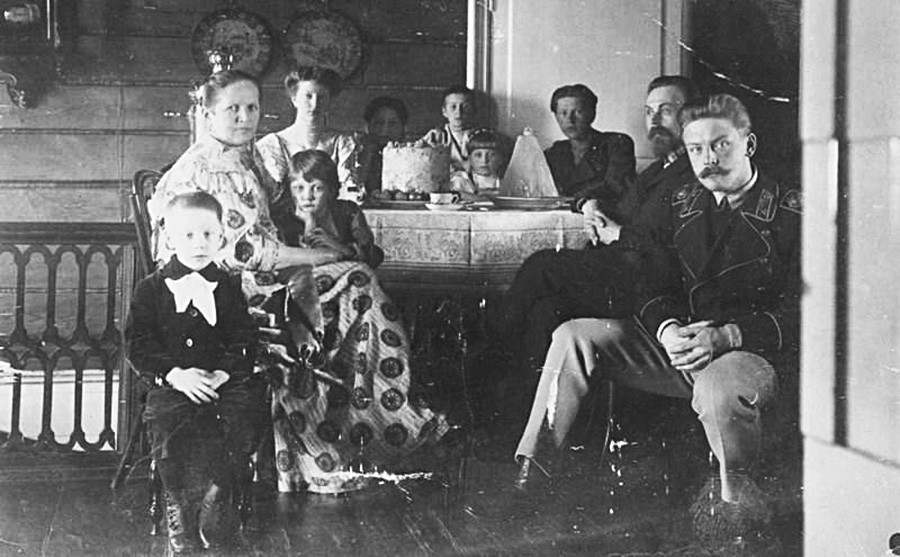
Family at the Easter table. Vladimir Region, Murom. 1900s.
Murom historical art museum/Russia in photo6. In summer, people regularly had dinners at the dacha (Eng. “country house”). The dining table was taken outside and covered with a light tablecloth. The center of the table traditionally belonged to a large samovar with tea.

Writer Leo Tolstoy with family and friends in Tula Region, Yasnaya Polyana. 1888.
S. Abamelek-Lazarev/Tolstoy state museum7. Still, Russians prefer tea to any other drinks. Sweets and intimate talks always follow the tea party.
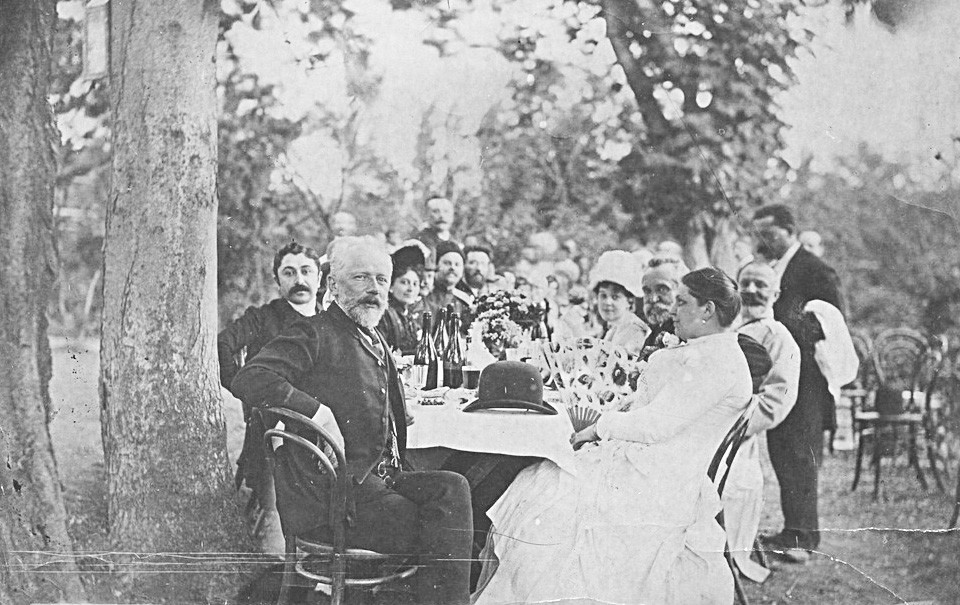
Composer Pyotr Tchaikovsky in Georgia, Tiflis among musicians. June-December 1889.
Joseph Andronikov/Tchaikovsky museum estate8. For richer families, all these feasts were just another one reason to show their wealth. They could get expensive food from Europe, and most often, had cooks arrange the table.
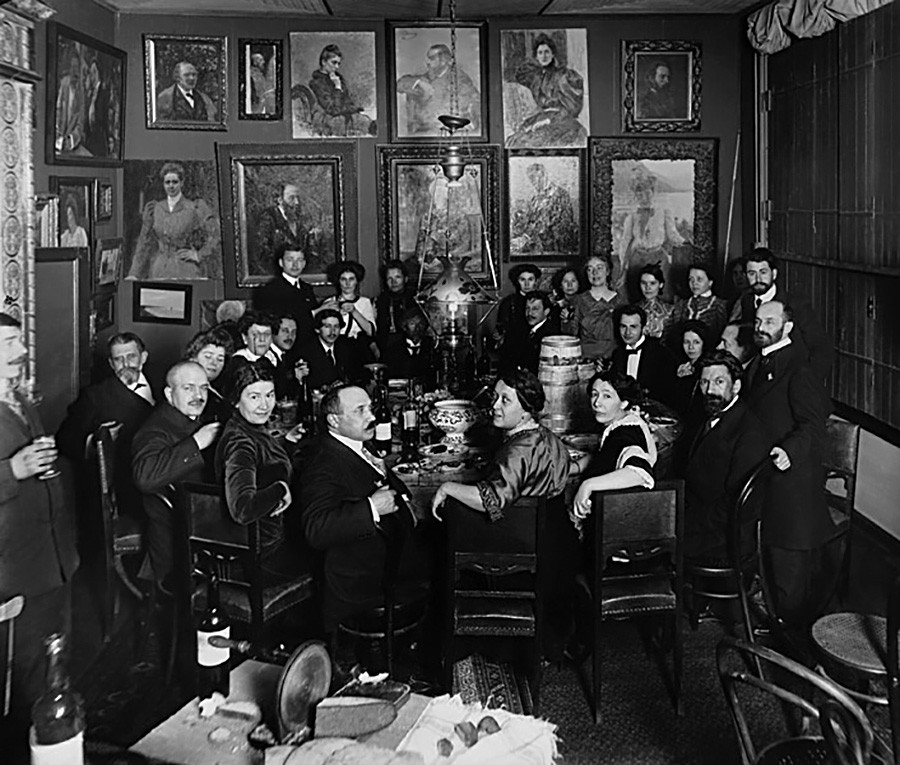
The festive dinner at the Penaty estate, St. Petersburg. 1904-1909.
Karl Bulla/Central film and photo state archive of St.Petersburg9. Gala dinners were also common in the restaurants of Russia’s capital. And the menus were always very elegant! Try, for example, the ‘Maly Yaroslavets’ restaurant on Bolshaya Morskaya street, that hosted famous writers (from Chekhov to Mamin-Sibiryak), and its served sterlet soup and a lamb with buckwheat!
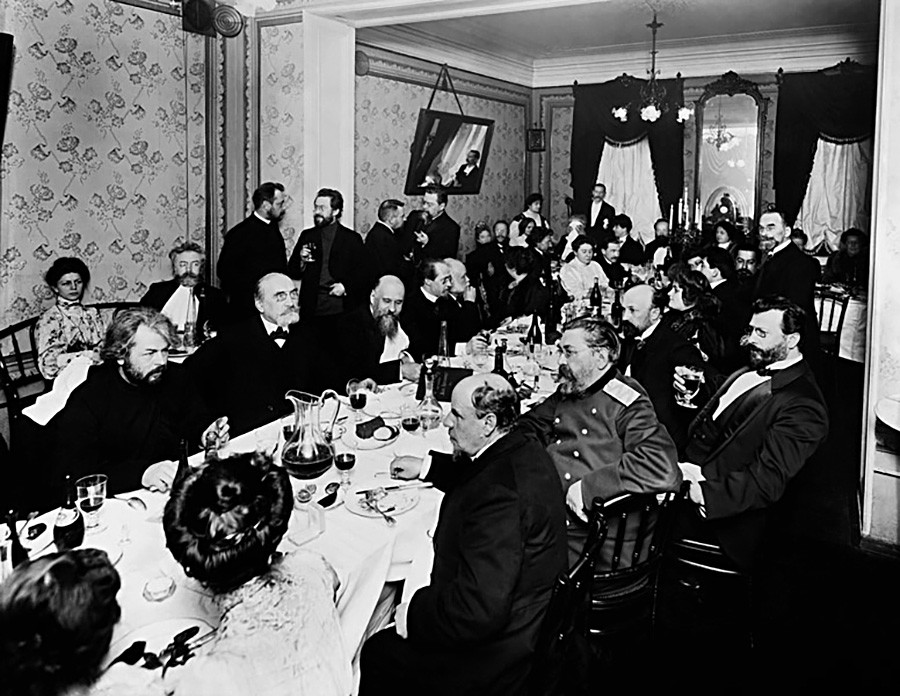
The dinner in honor of the 50th anniversary of the Literary Fund. Maly Yaroslavets restaurant, St.- Petersburg. November 8, 1909.
Karl Bulla/Central film and photo state archive of St.Petersburg10. The youth, as today, preferred to hold dinners with music. Guests who played the guitar and piano became the stars of the evening.
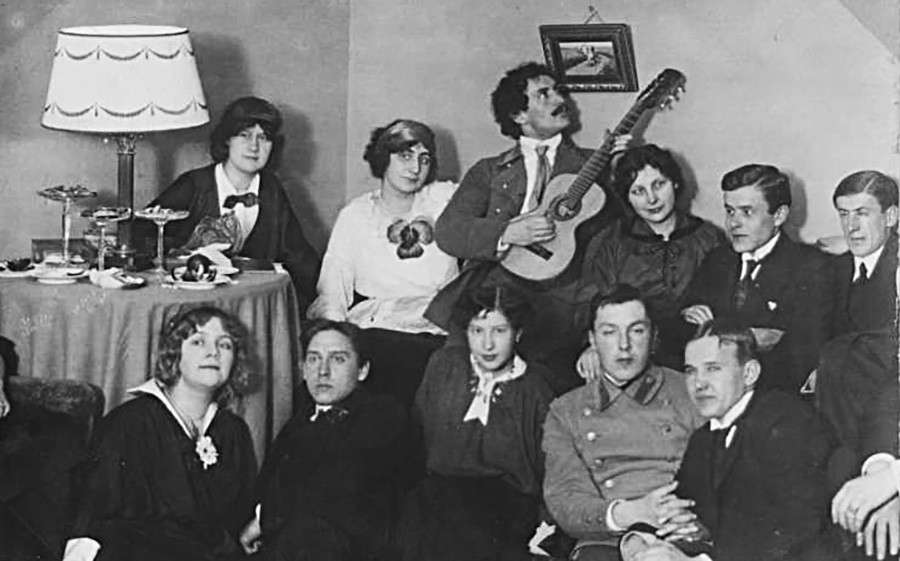
1910s.
MAMM/MDF/Russia in photoIf using any of Russia Beyond's content, partly or in full, always provide an active hyperlink to the original material.
Subscribe
to our newsletter!
Get the week's best stories straight to your inbox